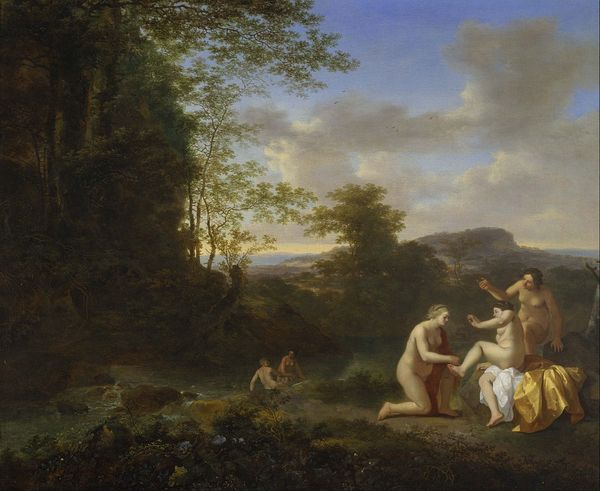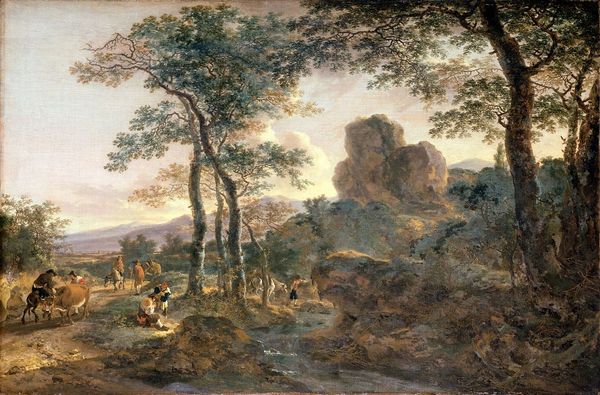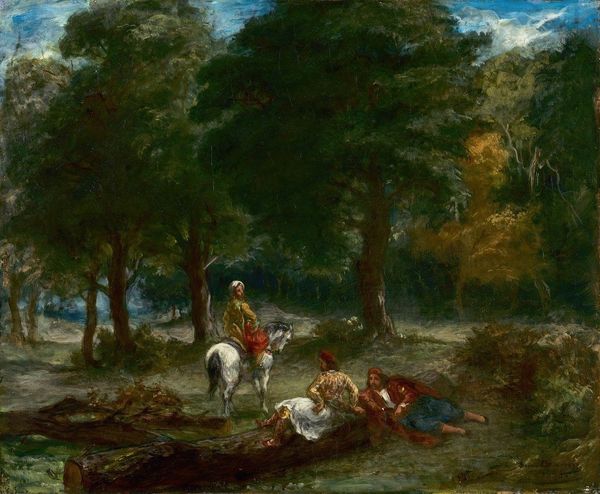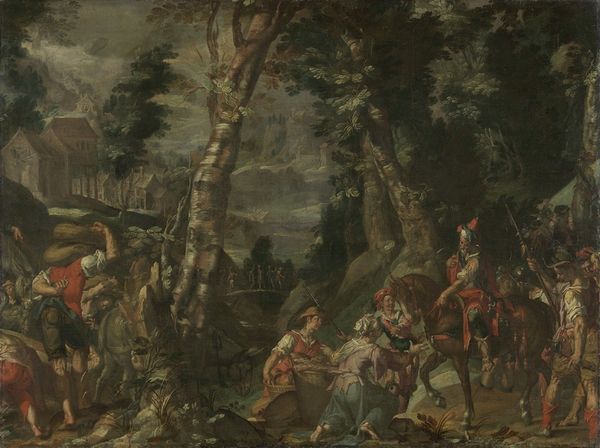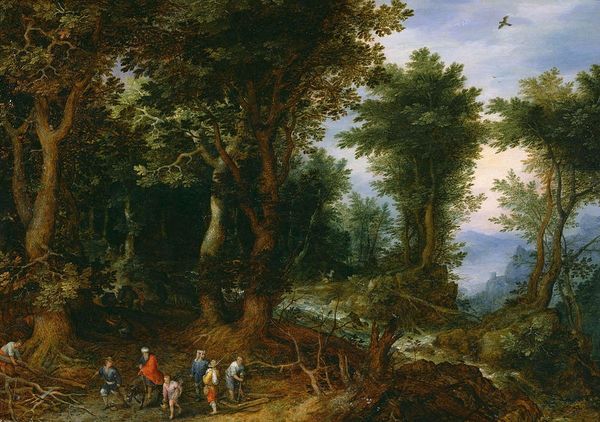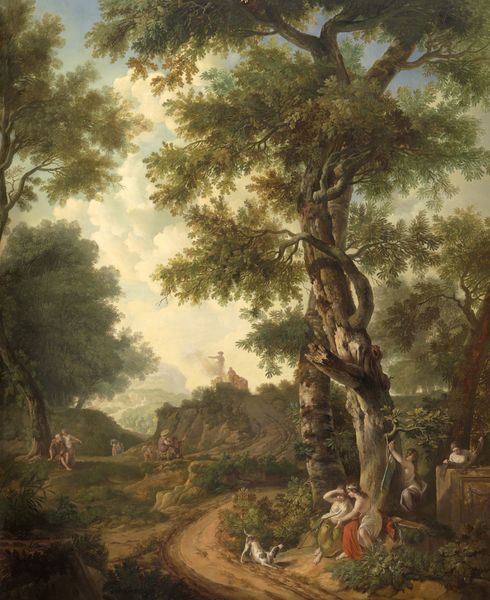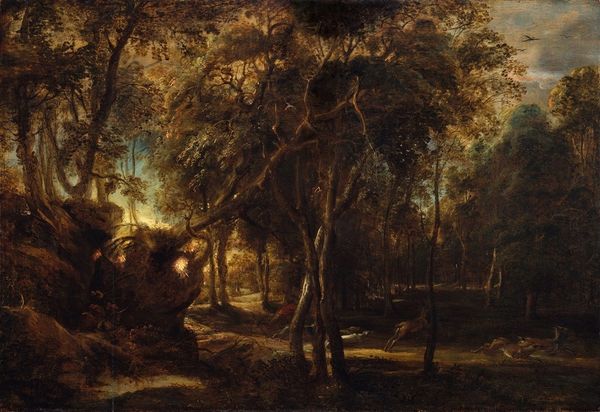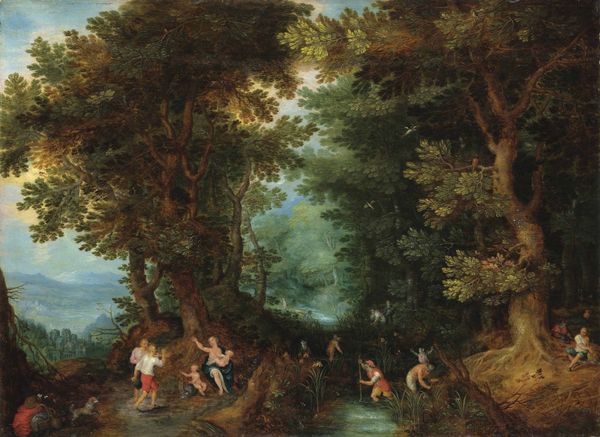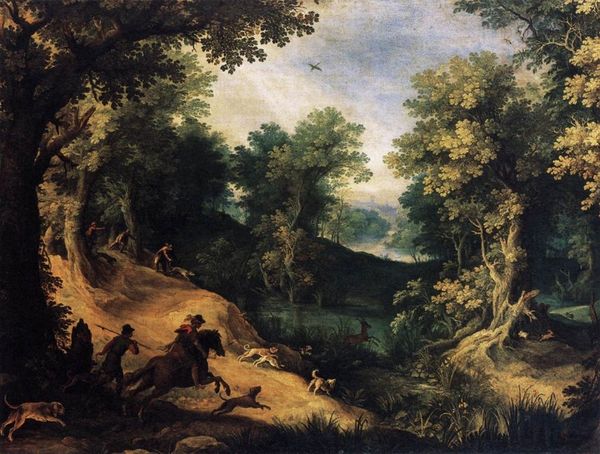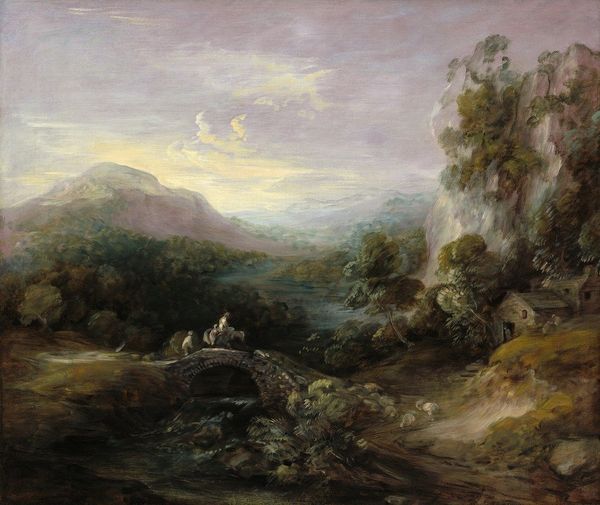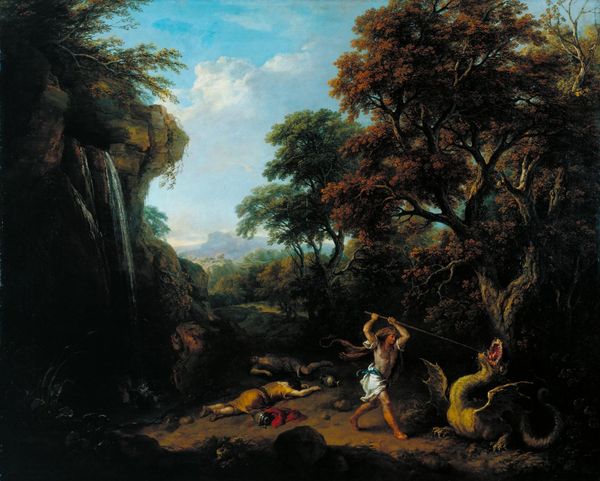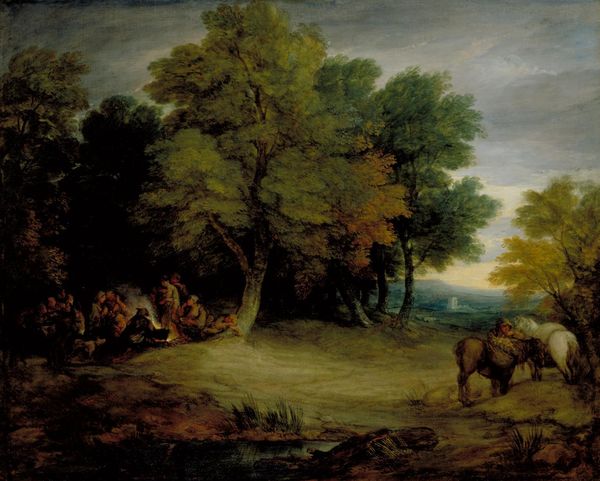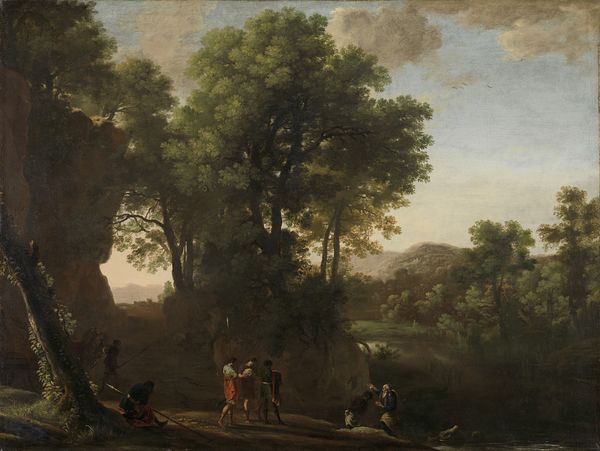
painting, oil-paint
#
narrative-art
#
baroque
#
painting
#
oil-paint
#
landscape
#
figuration
#
oil painting
#
history-painting
#
academic-art
Copyright: Public Domain: Artvee
Editor: Abraham Bloemaert's oil painting, "The Preaching of Saint John the Baptist," created sometime between 1590 and 1610, really captures a sense of Baroque drama with this crowded landscape. What's most striking to me is how the figures in the foreground are brightly lit, which contrasts so sharply with the darker woods in the background. What do you see in this piece? Curator: Well, I’m immediately drawn to the staging. Look at how Bloemaert positions John the Baptist off to the side. It’s not a centralized composition like earlier Renaissance works depicting religious scenes. This deviation points towards the Counter-Reformation’s influence and the push for a more engaging, accessible religious imagery. What do you think is the affect of decentering the action like this? Editor: It's almost like John is preaching to *us,* the viewers, as well as the figures within the painting. It breaks the fourth wall. Curator: Exactly. And notice how he includes these contemporary figures amongst the biblical ones? We see an idealized image of common folk from that period – perhaps meant to reinforce the accessibility of John’s message and of the Church to all members of society. Considering this artwork would likely have been commissioned, we have to look at who held power and the intended impact on the viewer during this period. Does knowing this influence how you engage with the image? Editor: It does! I was initially struck by the artistry, but understanding the social and religious context gives the painting a deeper meaning. It reveals this isn't just a Bible scene; it is political communication, an appeal for societal engagement. Curator: Precisely. This painting, therefore, tells us a lot about not just Baroque art, but also about the relationship between art, religion, and society in the 17th century. Editor: I definitely see Bloemaert's painting with completely fresh eyes now. It's fascinating how a historical perspective makes art from the past so incredibly relevant today!
Comments
rijksmuseum about 2 years ago
⋮
The protagonist in this scene, John the Baptist, the forerunner of Christ, stands partially concealed in the shade of a group of fanciful trees. It is as if Bloemaert wanted to prove that he could paint virtually anything and everything: a mountainous landscape, leafy trees, as well as figures, either nude or clad in exotic colourful gowns and arranged in complicated poses. All of this proves him to be a master of Mannerism.
Join the conversation
Join millions of artists and users on Artera today and experience the ultimate creative platform.
